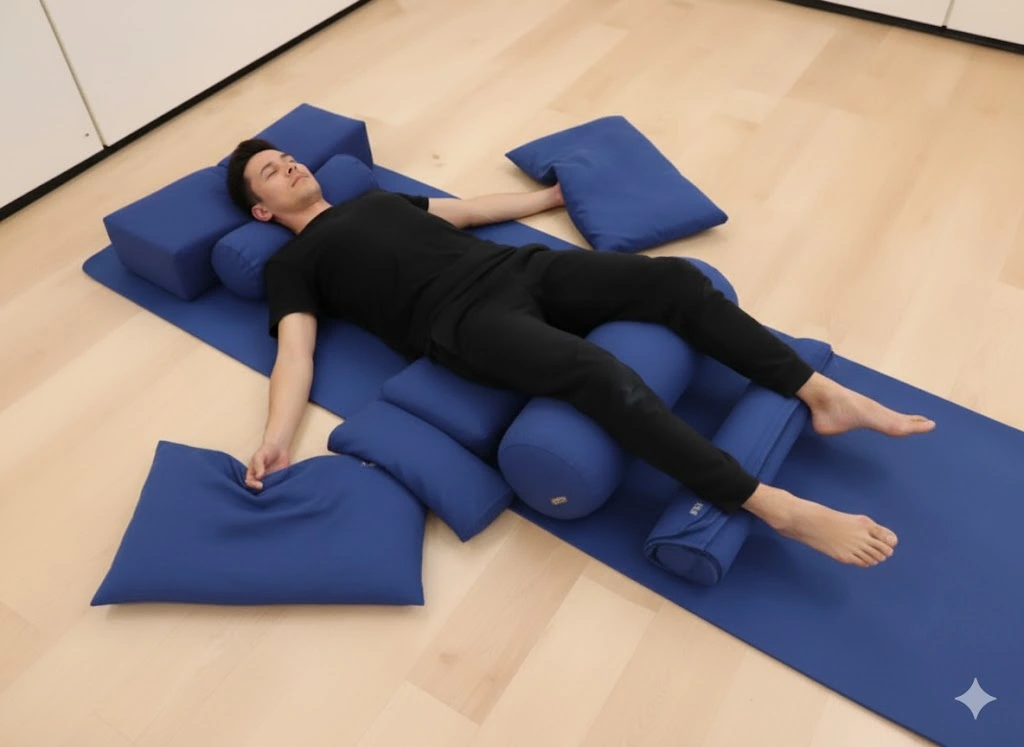Introduction
Do you ever wonder if you should do cardio or lift weights first? You’re not alone. Many people feel confused when they start working out. Cardio and strength training are two of the most popular types of exercise, but they do very different things for your body.
Cardio means exercises that make your heart beat faster, like running, walking, swimming, or cycling. These help your lungs and heart stay strong. On the other hand, strength training means building your muscles by using weights, resistance bands, or even your own body weight. It helps you get stronger and burn calories even when you’re resting.
Both are important, but in different ways. Cardio helps your heart stay healthy, while strength training builds muscle and makes your body powerful. When you combine both, you get the best results, more energy, better stamina, and a fit, healthy body.
In this guide, you’ll learn what each type of exercise does, how to mix them, and how to build a routine that fits your life. By the end, you’ll know exactly how to balance cardio and strength training for the best results.
Table of Contents
What Is Cardio?
Cardio and strength training together make your body strong inside and out, but let’s start with the cardio part first. Cardio means any workout that makes your heart beat faster and your body move more. It helps your lungs and heart get stronger while burning calories at the same time. When you do cardio and strength training regularly, you’ll notice more energy and better focus during the day.
Common examples of cardio are walking, jogging, swimming, cycling, dancing, or HIIT workouts. You don’t need fancy equipment to do cardio, even a brisk walk or climbing stairs counts. The goal is to move enough to make your heart work a little harder.
Experts say you should do about 150 minutes of moderate cardio or 75 minutes of intense cardio every week. That might sound like a lot, but when you mix cardio and strength training smartly, it becomes easy. You can do short 20–30 minute sessions daily instead of long, tiring workouts.
Cardio keeps your body active, improves blood flow, and boosts stamina. It also helps control weight and supports your strength exercises by improving recovery. One fun tip, if you can talk but not sing during exercise, you’re doing the perfect level of cardio.
Doing cardio and strength training together gives your body balance, one keeps your heart healthy, and the other builds muscle. That’s why people who include both types of workouts see faster, more lasting fitness results.
What Is Strength Training?
Strength training is the second half of the cardio and strength training combo that keeps your body strong, balanced, and healthy. While cardio makes your heart powerful, strength training builds muscles, tones your body, and helps you burn calories even when you’re not working out. That’s why cardio and strength training together give you the best fitness results.
Strength training means using resistance to challenge your muscles. You can do it with dumbbells, resistance bands, or even your own body weight. Squats, push-ups, planks, and lunges are great examples. These simple moves help you become stronger and more confident over time.
When you add cardio and strength training to your weekly plan, your body improves in many ways. Your bones get stronger, your posture improves, and your metabolism speeds up. That means your body keeps burning fat even when you’re resting or sleeping.
Experts suggest doing strength training two to three times a week. Try to work all your major muscle groups, legs, arms, chest, back, and core. Remember to rest one or two days between training the same muscles. Recovery is just as important as exercise in any cardio and strength training plan.
The best part? You don’t need heavy gym equipment. You can start with light weights or bodyweight exercises at home. Just stay consistent, increase resistance slowly, and focus on form. With regular cardio and strength training, you’ll feel stronger, move better, and stay healthier every day.
Cardio vs Strength Training, What’s the Difference?
Many people think they have to choose between cardio and strength training, but the truth is, both are important. Cardio focuses on your heart and lungs, while strength training targets your muscles. Together, they create a perfect balance for total fitness.
Here’s a quick look at how cardio and strength training differ:
| Energy Source | Oxygen (aerobic) | Muscle resistance (anaerobic) |
| Goal | Heart health & endurance | Muscle growth & tone |
| Frequency | 3–5 times a week | 2–3 times a week |
| Rest Time | 1 day | 48–72 hours per muscle |
| Examples | Walking, cycling, swimming | Squats, push-ups, dumbbells |
Cardio burns calories faster during the workout because your heart rate stays high. You move more, sweat more, and burn fat in real time. Strength training, on the other hand, builds lean muscle that keeps burning calories even after the workout is over. That’s the magic of combining cardio and strength training, one gives instant burn, and the other gives long-term results.
If your goal is to lose fat, cardio helps you get there faster. But if you want to shape your body, improve posture, and stay strong as you age, strength training is key. When you do both, your body works smarter, cardio keeps your heart healthy, and strength training keeps your muscles firm and active.
In short, cardio and strength training are not rivals. They’re partners. Together, they make your fitness routine more balanced, effective, and fun.
Benefits of Cardio
Cardio and strength training are like two sides of the same coin, and cardio brings its own amazing benefits to your health. The first big benefit is a stronger heart. Every time you walk, jog, or dance, your heart pumps blood faster, keeping your blood vessels clear and your heart muscles healthy. Regular cardio lowers your risk of heart disease and helps you live longer.
Cardio also improves your lungs. When you breathe deeply during exercise, your lungs get stronger, helping you take in more oxygen. This makes you feel more energetic and less tired during daily activities. That’s why cardio and strength training together help you stay active and alert all day.
Another great thing about cardio is fat burning. It helps your body use stored fat as energy. Whether you’re doing brisk walking or a short HIIT session, your body burns calories fast. Over time, this helps with weight control and body confidence. Cardio is also good for your mind. It releases endorphins, chemicals that make you feel happy and reduce stress.
After a good cardio session, you’ll often feel calm, refreshed, and focused. Better sleep is another hidden gift of cardio. When you move more, your body rests better at night. And when you sleep well, you recover faster, which makes your strength training sessions even more effective.
Lastly, cardio keeps your body flexible and improves blood flow. That means faster muscle recovery and less soreness after workouts. This is why cardio and strength training make such a powerful pair, one supports the other perfectly, helping you build stamina, lose fat, and stay healthy inside and out.
Benefits of Strength Training
Strength training is the other key part of cardio and strength training. It builds your muscles, shapes your body, and boosts your metabolism. When you lift weights, use resistance bands, or do bodyweight exercises, your muscles work harder and grow stronger over time. One of the biggest benefits of strength training is muscle growth.
The more muscle you build, the more calories your body burns, even when you’re sitting or sleeping. That’s why mixing cardio and strength training helps you burn fat faster and keep it off for good. Strength training also makes your bones and joints stronger. It helps prevent injuries and supports your body as you get older.
You’ll notice better posture, balance, and confidence in your daily life. Every time you lift, push, or pull, your body learns to move with more power and control. Another benefit is improved metabolism. After a good strength workout, your body continues to burn calories for hours.
This effect, called the “afterburn,” makes cardio and strength training such a powerful team, one burns calories during the workout, and the other keeps burning them afterward. Strength training also helps reduce belly fat and improves how your body uses energy. It supports your heart, improves circulation, and gives your body a toned, athletic look.
You don’t need to be a bodybuilder to see results, even two or three sessions a week can make a big difference. In short, strength training is more than just lifting weights. It’s about building a body that moves better, looks stronger, and feels unstoppable. When you combine it with cardio and strength training routines, your fitness reaches a whole new level.
How to Combine Cardio and Strength Training
Now that you know what both workouts do, let’s see how to combine cardio and strength training the right way. The goal is to balance them so your body gets stronger without feeling tired or sore all the time. When you plan correctly, cardio and strength training work together to give you the best results.
You can mix them in three simple ways:
1. Alternate Days
This is the easiest method for beginners.
- Monday – Cardio (like jogging or cycling)
- Tuesday – Strength (push-ups, squats, or dumbbell exercises)
- Wednesday – Rest or yoga
- Thursday – Cardio again
- Friday – Strength
This method gives your body enough time to rest between sessions while keeping your heart and muscles active.
2. Same Day Plan
If you want to do both on the same day, order matters.
- Do weights first if your main goal is to gain muscle.
- Do cardio first if your goal is to lose fat.
For example, you can lift weights for 30 minutes, then do a light 15-minute jog to finish your session. This keeps your routine balanced and your body ready for progress.
3. HIIT (High-Intensity Interval Training)
HIIT is one of the best ways to combine cardio and strength training in one session. It mixes short bursts of hard work with quick rest periods. Example:
- 30-second jump squats
- 30 seconds of push-ups
- 30 seconds of burpees
- 30 seconds rest
Repeat this 3–4 times for a total body workout.
HIIT saves time and boosts both endurance and muscle tone. It also keeps your heart rate up while training your muscles, making it a perfect blend of cardio and strength training.
No matter which method you choose, remember to warm up first and cool down afterward. Listen to your body, rest when needed, and keep your workouts fun. When cardio and strength training work together, you’ll feel stronger, healthier, and more confident every week.
Weekly Workout Example
A good fitness plan combines cardio and strength training in a way that’s easy to follow and fits your lifestyle. You don’t have to spend hours at the gym, short, consistent workouts bring great results. Here’s a simple weekly example that balances both cardio and strengthtraining for beginners and busy people alike:
| Monday | Strength + Light Cardio | Push-ups, squats + 20-min walk |
| Tuesday | HIIT or Cycling | 20 mins of interval training |
| Wednesday | Core + Stretch | Plank, yoga, or gentle stretching |
| Thursday | Lower Body Strength | Lunges, resistance band workouts |
| Friday | Steady Cardio | 30-min brisk walk or easy jog |
| Saturday | Total Body | Dumbbell circuit + short cardio finisher |
| Sunday | Rest or Active Recovery | Light walk, yoga, or foam rolling |
This plan keeps your body active all week while giving your muscles time to rest and recover. The mix of cardio and strength training helps your heart stay strong, builds lean muscle, and burns calories effectively.
For example, on Monday, strength training tones your body, and a light walk keeps your heart healthy. By Friday, a steady cardio session improves stamina. And by the weekend, your body feels stronger, more flexible, and ready for another week of cardio and strength training.
The key is balance, don’t do too much too fast. Start with 4–5 days a week, then increase intensity slowly. Always focus on form and enjoy the process. When you mix cardio and strength training regularly, you’ll start seeing visible results in just a few weeks, more energy, a better mood, and a fitter, healthier body.
Tips for a Balanced Routine
Doing cardio and strength training together works best when your body gets the right care. These simple tips will help you stay safe, strong, and motivated while keeping your workouts balanced and effective.
1. Always Warm Up and Cool Down
Start every workout with a 5–10 minute warm-up, like light jogging or jumping jacks. This helps your heart, lungs, and muscles get ready. After finishing your cardio and strength training, spend a few minutes stretching to relax your body and prevent soreness.
2. Eat Smart
Fuel your body with healthy food. Eat a mix of protein, carbs, and healthy fats to support your workouts. Protein helps your muscles recover faster after strength sessions, while carbs give you energy for cardio. A small post-workout snack like a banana with peanut butter or aprotein shake is perfect.
3. Stay Hydrated
Water is your best friend during cardio and strength training. Drink before, during, and after your workouts. When your body is hydrated, your energy stays high, and you perform better.
4. Rest and Recovery Matter
Never skip rest days. Your muscles grow and get stronger when you rest, not just when you train. Make sure to take at least one or two rest days each week. On rest days, you can still move lightly — go for a walk or stretch.
5. Get Enough Sleep
Sleep is where your body repairs and rebuilds. Aim for 7–8 hours every night. Without proper sleep, your body can’t recover from intense cardio and strength training, and you’ll feel tired or sore faster.
6. Track Your Progress
Keep a simple notebook or use an app to track your workouts. Write down what exercises you did, how long, and how you felt. This helps you stay consistent and see how far you’ve come.
7. Listen to Your Body
If something hurts, stop. Soreness is normal, but sharp pain means you should rest. Remember, cardio and strength training are long-term habits, consistency is better than overdoing it.
When you follow these small but powerful tips, you’ll build a routine that’s healthy, safe, and sustainable. Over time, you’ll notice that cardio and strength training not only transform your body but also boost your confidence, focus, and overall happiness.
FAQs (Frequently Asked Questions)
Q1: Should I do cardio or weights first?
If your goal is to lose fat, start with cardio. If you want to gain muscle, begin with weights. Mixing both gives the best results in any cardio and strength training routine.
Q2: Can I do cardio and strength training every day?
Yes, but alternate intensity. For example, one day do hard cardio and light strength, the next day switch. Your body needs time to recover.
Q3: What’s best for belly fat?
There’s no single exercise for belly fat. The best plan is to combine cardio and strength training with a healthy diet. Over time, your waistline will shrink naturally.
Q4: How long should my workouts be?
Start with 30–45 minutes a day. That’s enough to stay fit and healthy when you balance cardio and strength training smartly.
Q5: Can I build muscle without a gym?
Absolutely! Push-ups, squats, planks, and resistance bands work great. You don’t need a gym, just consistency and effort.
Conclusion
Cardio and strength training are like best friends, one keeps your heart strong, and the other keeps your body powerful. When you combine them, you get the perfect mix for better health, more energy, and a body that feels alive.
The goal isn’t to overdo it. Start small, stay consistent, and focus on steady progress. Even short workouts matter when you make cardio and strength training a part of your daily life. With time, you’ll notice changes, stronger muscles, better stamina, and a more positive mood.
Remember, every step, every lift, and every drop of sweat counts. You don’t need a fancy gym or heavy weights to stay fit. Just move, stay active, and take care of your body. Cardio and strength training together can help you build not just a strong body, but also a confident mind.
So, take that first step today, mix your workouts, stay consistent, and enjoy the journey toward a healthier, stronger you.





